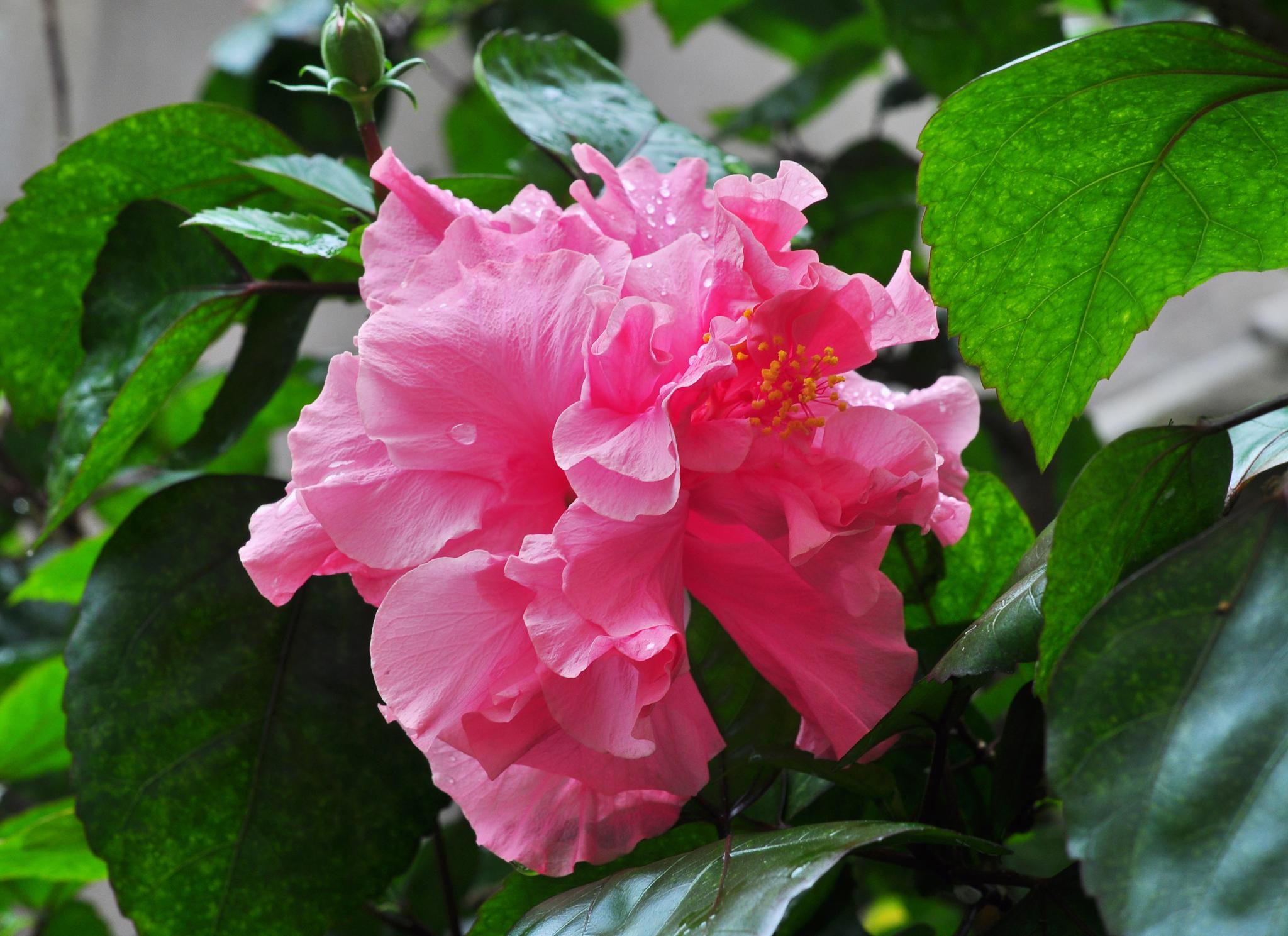A reader asks today if I would have the answer to the reason why the leaves on her Hibiscus are turning yellow. She asks, Could it be that she is watering them too much? I ask myself here, can one really water too much in the summer months? She doesn't mention if the plant is in a pot or in the ground because that may influence the situation a little. In the ground the water naturally drains away or dries out in the sun where as a pot in a drip plate could easily be sitting in water all the time. Remember all leaves do fall at some time or other, some as in deciduous trees and shrubs loose them all about the same time in the autumn where as others stay green all the time just letting fall a few at a time which could well be what is happening with this Hibiscus. Just keep an eye on it, should the stems with the yellow leaves look damaged then cut that stem back to where it looks healthy, even to the main stem to avoid any 'die back'. It doesn't hurt to do a sort of summer prune when some shrubs grow beyond themselves just to tidy them up a little and encourage more flowers to form on any new growth. At the moment the Hibiscus is one of those shrubs that is in full flower with many new varieties in quite different colours , the brightest yellow or salmon pink as well as the brightest red.
In the heat of the summer days we are always looking for something cool to do or wonder why we planted up such and such which produce so much work. The idea therefore would be to try and think ahead to find plants that almost look after themselves. With this in mind and already speaking of Hibiscus, some gardens will lend themselves more to shrubs and bushes that need little or no attention other than the occasional cutting back once a year. Roses are a number one in any garden, add Lavander and Rosemary, Datura, Bougainvillea, Buddleia, Lantana, the list is endless and most of these are not greatly demanding on daily watering. We have of course mentioned in the past many of the Cacti and Succulent family which of course thrive in this climate storing their own moisture in their fleshy leaves and stems. Annuals of course can be full of flower and colour but as the name says, they just last one season and usually need far more attention and water that those perennials and shrubs. Then we can turn to the kitchen garden which is where the endless daily chore comes in if we are going to want to harvest anything of what is planted. Winter vegetables are far easier to grow here than the summer ones if we are considering those hours we have to spend in the garden. Admittedly it won't be long before we have to start planting up what we consider here as winter vegetables and there we will be adding the hours outside in the heat.

There is of course a great deal of satisfaction from popping out into the garden to pick a couple of ripe tomatoes and a cucumber for a salad or watch the marrows grow almost daily. Do we cut them young as Corgettes or leave some until they grow into giant Marrows?
A nice green lawn and a bit of shade from a tree or two are probably the easiest summer garden to tend with but here is where I revert to how I introduced this section, thinking ahead, a lawn really does look after itself except for the occasional cutting. So, do we dig up the vegetable patch next year and plant grass for a lawn? Just think of the after work hours in the cool of the evening sitting on the lawn, I am all for that.



No comments
To be able to write a comment, you have to be registered and logged in
Currently there are no comments.